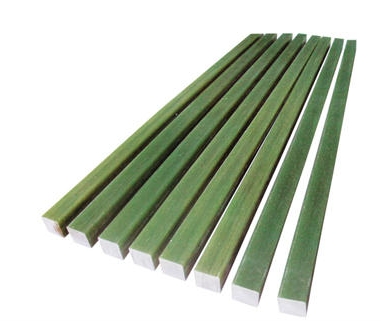- 14
- Oct
Precautions for the use of epoxy glass fiber rods and storage methods
Precautions for the use of epoxy glass fiber rods and storage methods
1. The appearance of the insulated operating rod must be inspected before use, and there must be no external damage such as cracks, scratches, etc. on the appearance;
2, it must be qualified after verification, and it is strictly prohibited to use it if it is unqualified;
3. It must be suitable for the voltage level of the operating equipment and can only be used after it has been verified;
4. If it is necessary to operate outdoors in rain or snow, use a special insulated operating rod with a rain and snow cover;
5. During operation, when connecting the section of the insulated operating rod and the thread of the section, leave the ground. Do not place the rod on the ground to prevent weeds and soil from entering the thread or sticking to the surface of the rod. The buckle should be tightened lightly, and the thread buckle should not be used without tightening;
6. When using, try to reduce the bending force on the rod body to prevent damage to the rod body;
7. After use, wipe clean the dirt on the surface of the rod body in time, and put the sections into a tool bag after disassembling them, and store them in a well-ventilated, clean and dry bracket or hang them up. Try not to get close to the wall. To prevent damp and damage its insulation;
8. The insulated operating rod must be kept by someone;
9. Conduct an AC withstand voltage test on the insulated operating rod half a year, and discard the unqualified ones immediately, and can not reduce their standard use.
How to store epoxy glass fiber rod
1. A pair of epoxy glass fiber rod is generally composed of three sections. When storing or carrying, the sections should be disassembled and then the exposed threaded ends should be placed in a special tool bag to prevent scratches on the surface of the rod or damage to the threaded fasteners.
2. When storing, choose a well-ventilated, clean and dry place, and hang it on a special brake rod rack, which is managed by a dedicated person. The insulating board should not be in contact with the wall to avoid moisture.
3. Once the surface of the epoxy glass fiber rod is damaged or damp, it should be treated and dried in time. It is not advisable to wind the rod surface damage with metal wire or plastic tape. It is better to use the natural sun drying method when drying, and do not use fire to re-bake. After treatment and drying, the gate rod must be tested and qualified before it can be used again.
4. An AC withstand voltage test must be carried out once a year. The epoxy glass fiber rods that fail the test shall be immediately scrapped and destroyed, and the standard shall not be lowered for use, let alone put together with the qualified epoxy glass fiber rods.

